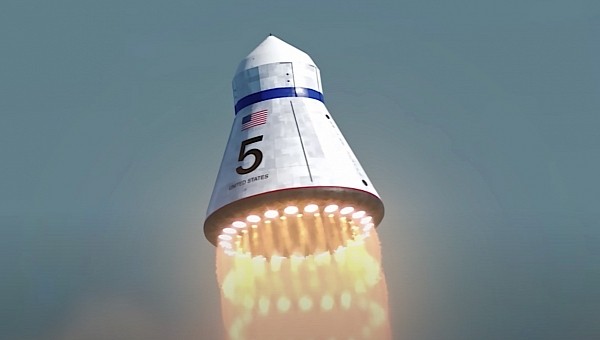Just like the history of the automobile, the history of space rockets is filled with ideas and concepts that never came to be. Unlike when it comes to concept cars though, most of these concept rockets, if they can be called that, never came to be built in the modern world, not even as demonstrators, so we cannot physically enjoy them in any way.
That means we cannot even visually enjoy them, because aside from a few drawings coming our way from back in the day there were made, these concept rockets remain hidden in the minds of the people who conceived them.
That’s pretty much the case with a Boeing-designed low-Earth Orbit reusable launch vehicle, cooked up in the late 1970s as part of NASA’s early Powersat studies. Yes, people were thinking about reusable rockets long before SpaceX came along, and the Boeing Leo, as this rocket came to be known, was one of those early ideas.
It was meant to serve the needs NASA had for space operations, cheaper and faster than what the rockets of the time were capable of. It was to take off vertically, reach Earth’s orbit, and come back down vertically as well.
Unlike the SpaceX contraptions of our day, the Leo was a single-stage-to-orbit design, meaning all of it went up, and all of it came down. That made it look quite bulky and fat in the drawings of its time.
The Leo was supposed to be powered by twenty-four oxygen-hydrogen engines capable of developing 4.5 meganewtons of force. They were backed by an equal number of LOx-kerosene booster engines, rated at 2.25 meganewtons. Combined, and arranged in circles on the bottom of the rocket to look like rings of fire, the powerplants would have been capable of lifting 227 tons of cargo into space.
At take-off, the noise these engines would have generated would have been so great, there was no way NASA would be able to launch it from its land-based facilities. An artificial launch site should have been erected miles away from existing launch facilities, on the waters off Cape Canaveral, where it also would have landed.
The same remote location would have served as the rocket’s servicing and fueling area. The plan was to have the Leo fly a mission, return, and be ready for action once more in about four days, which is a lot faster even than today’s Falcon 9 boosters, which generally spend about two weeks getting ready for a new launch.
Like most other rocket concepts of its time, the Boeing Leo, or The Big Onion as some people call it, never came to be. Instead, it was lost to the history of space exploration without leaving its mark – actually, without being made for real.
That means none of us really got to know how the thing would have looked in action until a space specialist called Hazegrayart published this week an almost five-minute video of the thing in animated action. You can enjoy it all below, and get another glimpse at a sort of alternative space exploration history.
That’s pretty much the case with a Boeing-designed low-Earth Orbit reusable launch vehicle, cooked up in the late 1970s as part of NASA’s early Powersat studies. Yes, people were thinking about reusable rockets long before SpaceX came along, and the Boeing Leo, as this rocket came to be known, was one of those early ideas.
It was meant to serve the needs NASA had for space operations, cheaper and faster than what the rockets of the time were capable of. It was to take off vertically, reach Earth’s orbit, and come back down vertically as well.
Unlike the SpaceX contraptions of our day, the Leo was a single-stage-to-orbit design, meaning all of it went up, and all of it came down. That made it look quite bulky and fat in the drawings of its time.
The Leo was supposed to be powered by twenty-four oxygen-hydrogen engines capable of developing 4.5 meganewtons of force. They were backed by an equal number of LOx-kerosene booster engines, rated at 2.25 meganewtons. Combined, and arranged in circles on the bottom of the rocket to look like rings of fire, the powerplants would have been capable of lifting 227 tons of cargo into space.
At take-off, the noise these engines would have generated would have been so great, there was no way NASA would be able to launch it from its land-based facilities. An artificial launch site should have been erected miles away from existing launch facilities, on the waters off Cape Canaveral, where it also would have landed.
The same remote location would have served as the rocket’s servicing and fueling area. The plan was to have the Leo fly a mission, return, and be ready for action once more in about four days, which is a lot faster even than today’s Falcon 9 boosters, which generally spend about two weeks getting ready for a new launch.
Like most other rocket concepts of its time, the Boeing Leo, or The Big Onion as some people call it, never came to be. Instead, it was lost to the history of space exploration without leaving its mark – actually, without being made for real.
That means none of us really got to know how the thing would have looked in action until a space specialist called Hazegrayart published this week an almost five-minute video of the thing in animated action. You can enjoy it all below, and get another glimpse at a sort of alternative space exploration history.











